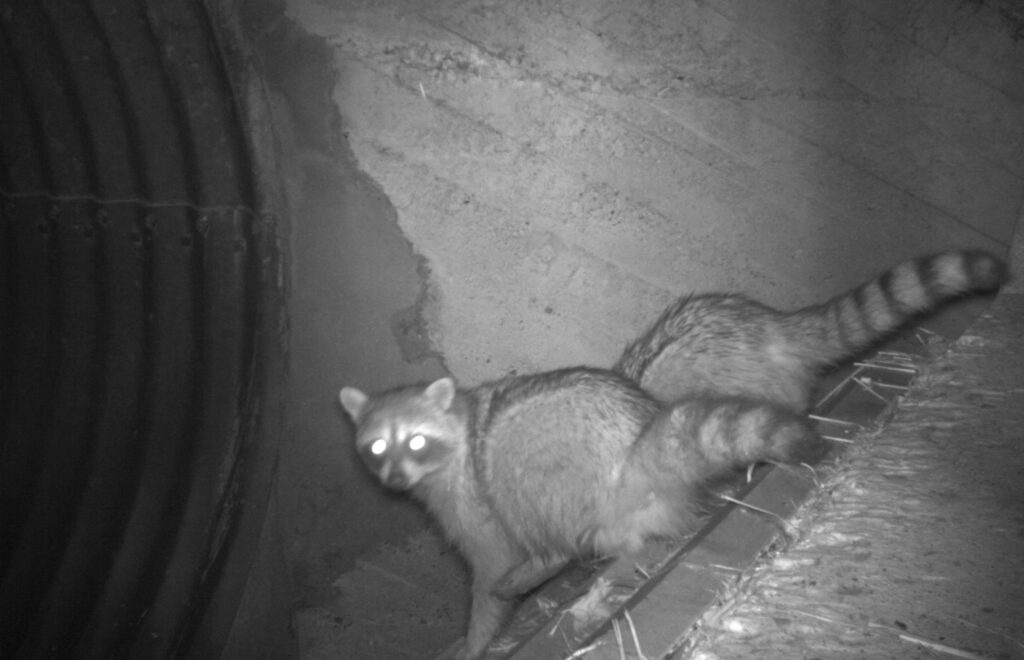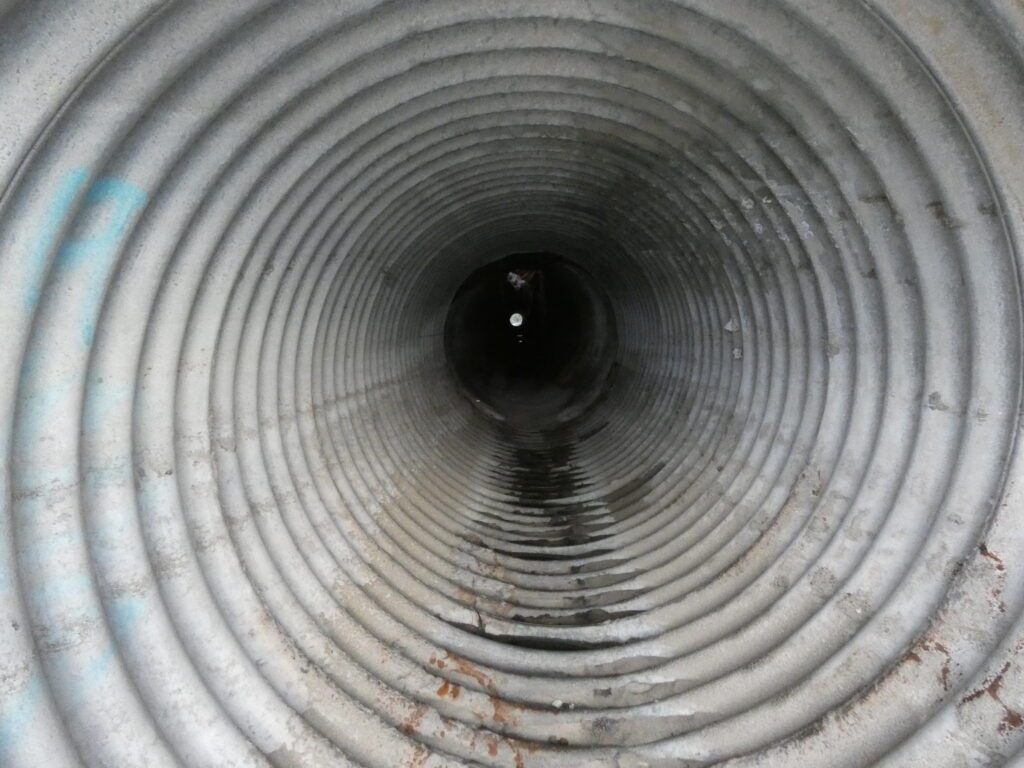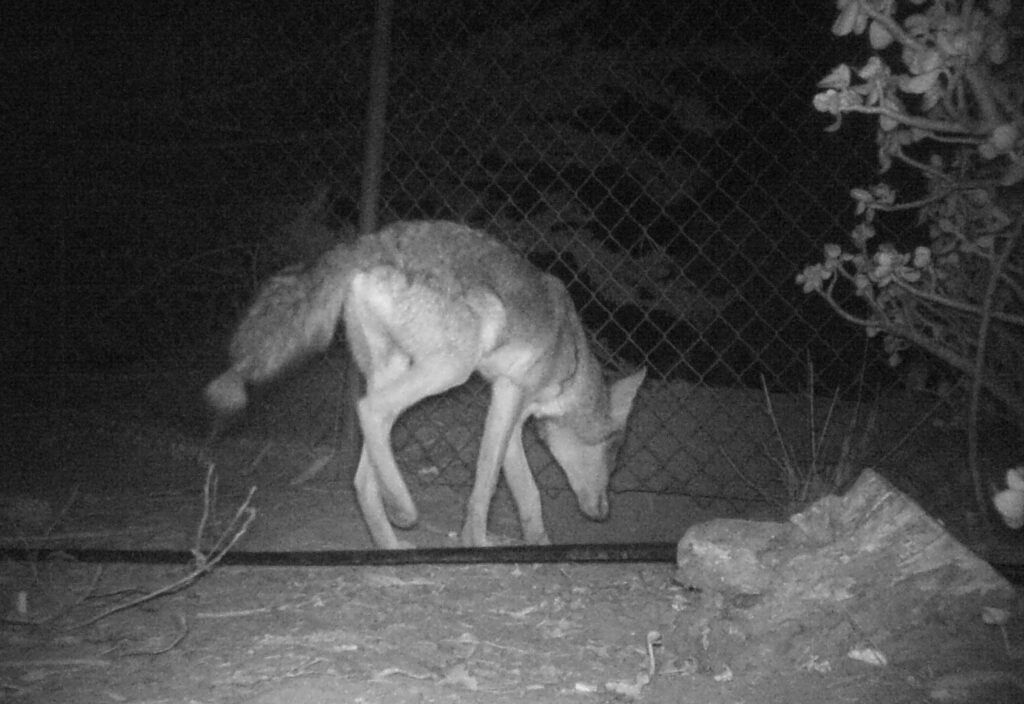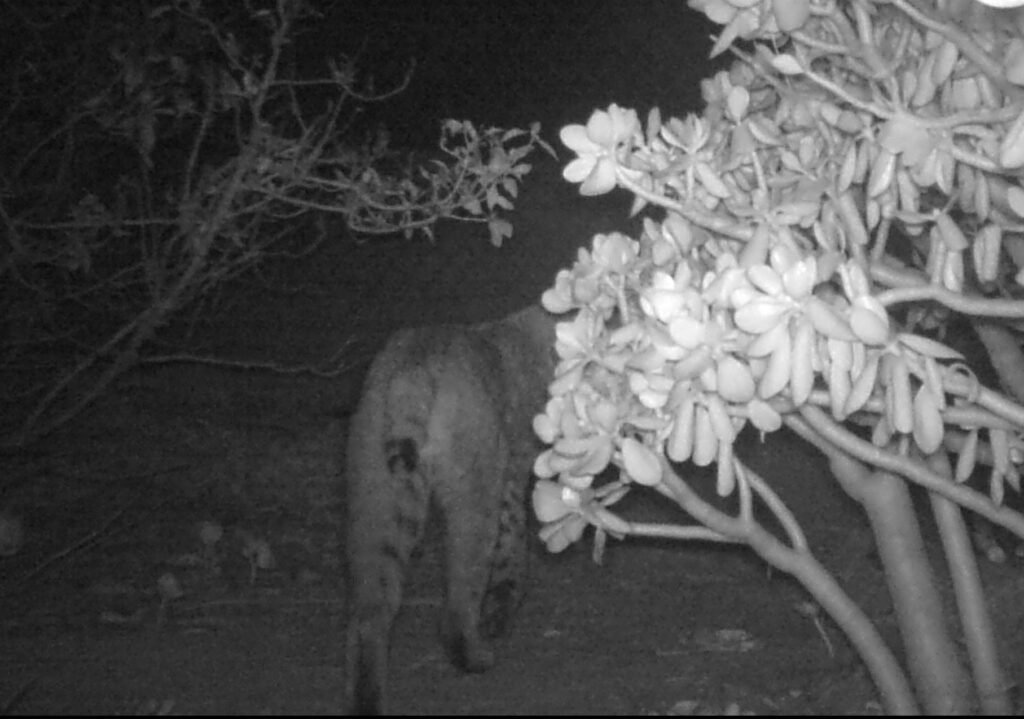All over the Santa Monica Mountains, wildlife lives parallel lives with humans. Animals cross roads, transit gardens and navigate their way over and under obstacles like fences.
In the parts of the mountains that are in the coastal zone, fencing is supposed to be “wildlife permeable”, but that isn’t always the case, and the needs of different species varies greatly. A driveway is an insurmountable obstacle for a slender salamander, but a six foot fence is no object to a determined coyote.
There are things all residents of the wildland interface can do to help keep wildlife safe. Footprints and scat are good indicators that animals are using an area to transit. Make sure gaps in walls or culverts that backyard wildlife uses to get around don’t lead to a dead end or a fenced area where wildlife will come into contact with domestic animals. If there’s a gap in or under a fence that lets wildlife in, either make sure there is also a way out, or block up the opening so wildlife can’t become trapped.
Even the larger animals like coyotes can fit through remarkably small gaps and spaces, and coyotes, bobcats, and mountain lions are powerful jumpers. Never assume that a standard, five or six foot fence will keep animals out.
Swimming pools, ponds and fountains can be a death trap for lizards, snakes, and rodents. A “lizard ladder”—a ramp made of wood, stone or concrete, or even just a tree branch that helps animals get out of a water feature if they fall in can save lives.


Picking up fallen fruit, securely closing garbage cans, making sure outdoor cooking areas are clean, and feeding dogs and cats indoors, or removing their dishes at night helps prevent wild animals from coming into contact with pets and humans and keeps them moving instead of foraging for a snack. It’s a good idea to clean up fallen birdseed from feeders, as well. Instead of feeding birds, consider providing water instead.
Do coyotes a favor and scare them away by shouting when they show up in the backyard—keep them moving through, and back into wild areas.
Keeping toxic rodenticides out of the environment is also key. All wildlife travels. A rodent that ingests rodenticide in a backyard may travel into a wilderness area before the slow-acting poison takes effect, sickening or killing predators that never came need the source of the poison.
On the road, slow down, especially in areas where there is undeveloped land on both sides of the road. Scan both sides of the road, and ask passengers to help watch out for wildlife. Sometimes the light from the car will reflect in an animal’s eyes, but many animals tend to dash across the road.
Topanga’s Trash Warriors help save wildlife from being struck by vehicles by picking up discarded food and food containers that can attract animals.
Removing roadkill from the road can help prevent scavengers from also being hit, but it’s important to make sure its safe to stop, and it’s a good idea not to touch a carcass directly—use a stick, or something kept in the car, like a cardboard box or even a tire jack.
Some animals travel in groups. If you see one deer or coyote, there’s a good chance there are more nearby. The only ringtails we’ve ever seen in the Santa Monica Mountains were a pair that had been struck by vehicles feet apart on Malibu Canyon Road.


Just like humans, wildlife tends to travel the same routes, and animals often take advantage of trails, garden paths and driveways. They also tend to cross the road in the same places. An area where roadkill occurs frequently is almost certainly a wildlife corridor.
Residents of the Santa Monica Mountains are blessed with both abundant wildlife and extensive open space, but living here is a responsibility too, one that involves being good neighbors, and good stewards. Remembering to share the road and being aware that there might be deer, skunks, coyotes, bobcats, mountain lions, raccoons, foxes, badgers, snakes and sometimes even tarantulas in the road can save lives—sometimes even our own.




